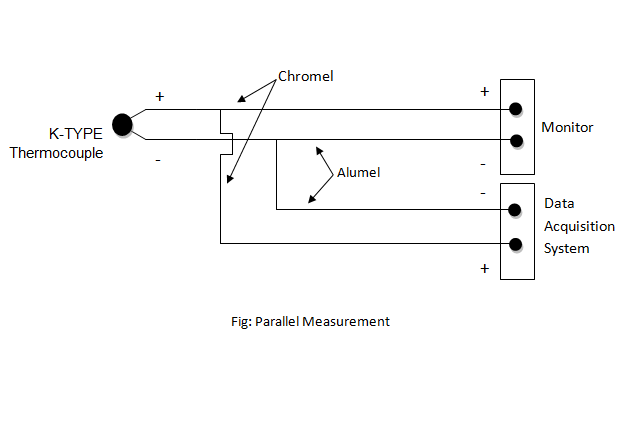- Home
- About
- Products
- Contact Temperature Sensors
- Cables & Wires
- Mineral Insulated Cables
- Nickel & Thermocouple Alloy
- Industrial Heaters
- Heating Cables and Mats
- Non Contact Temperature Sensors
- Industrial and R&D Furnaces
- Temperature Calibrators
-
Circulating Chiller
- Services
-
Special Products
- Thermal Profiling System
- Industries
- Resources
- Contact Us
- Shop
-

Email
enquiry@tempsens.com -

Phone
+91-9358835576
- Home
- Blog
- Default
- Thermocouple
- Making Parallel Thermocouple Measurements
Making Parallel Thermocouple Measurements
What are parallel thermocouple measurements?
The thermocouple can be connected to monitoring equipment, such as the controller and the data acquisition system, at the same time. It is often used to directly access temperature data taken from the thermocouple to control the process.
The two thermocouple wires must be welded together from one side to form a junction. Inconsistent readings can be generated from loose junctions such as twisted wire joints. According to the type of thermocouple, the wires used to connect two systems with the thermocouple must be made with the same metal/alloy. For example, Type K is composed of a positive Chromel wire and a negative Alumel wire.

A thermocouple is troublesome for any voltage-measuring instrument with high input impedance because the lack of a complete circuit on the input enables electrical noise from surrounding sources (power lines, electric motors, variable-frequency motors) to be detected by the instrument and falsely interpreted as wildly variable temperature. Thus, when a single thermocouple is connected to two devices, the reaction of the thermocouple to burn-out conditions should also be deemed. Presuming the device pulls high input voltage in burnout condition, the other device will not be able to recognize the burnout condition.
